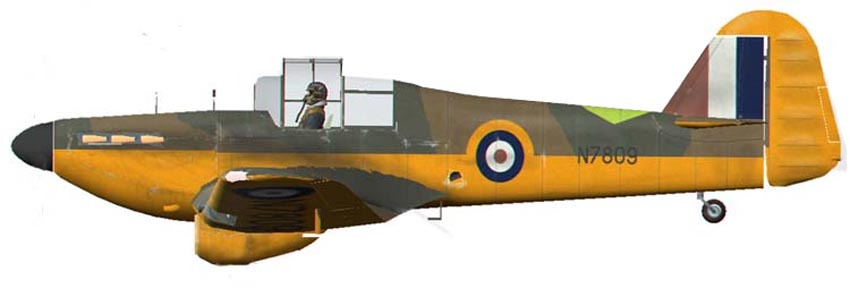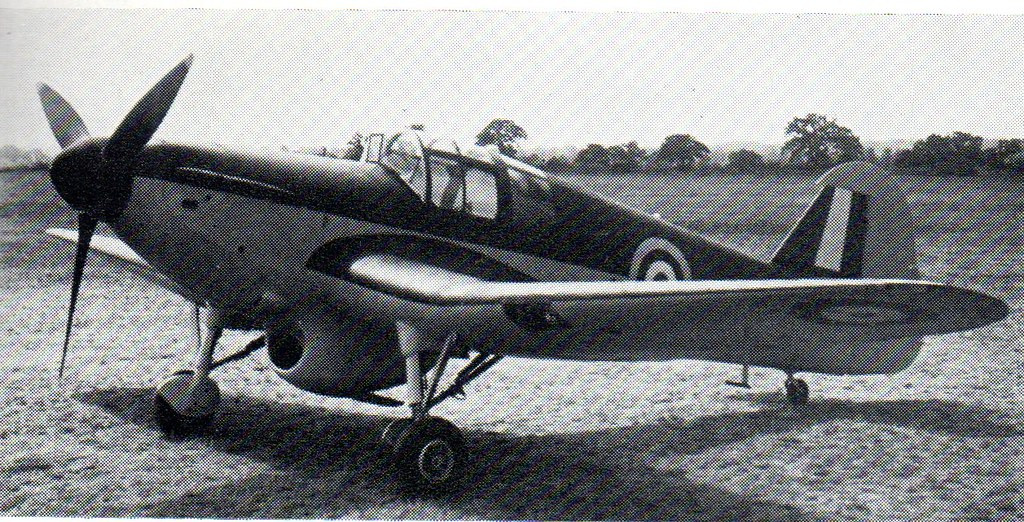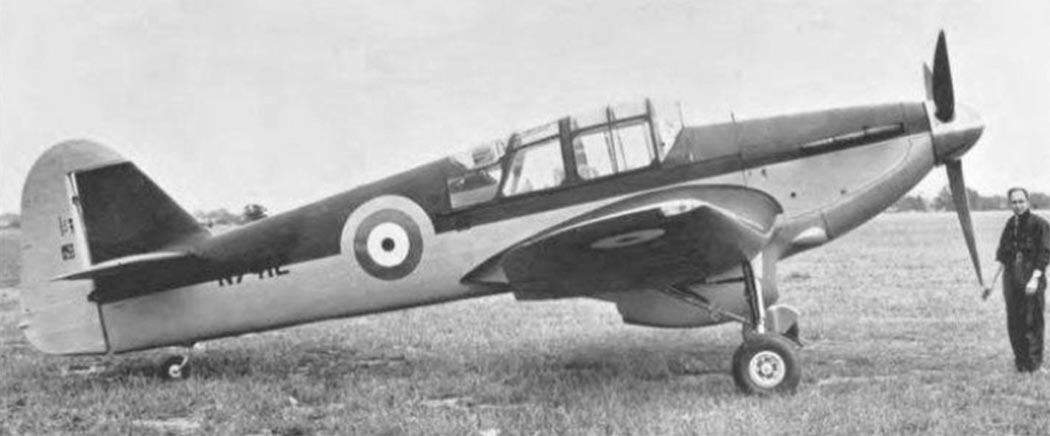- Yes
- No
Miles M.24 Master Fighter

Design and service history:
The Miles Master Fighter was a stopgap fighter aircraft developed from the existing Miles M.9B Master I aircraft in 1940 in response to concerns raised during the Battle of Britain regarding sustained German bombing of British aviation manufacturing facilities. The Master I was a two-seater training aircraft powered by a 750 hp Rolls-Royce Kestrel 30, then in production. The modifications involved the removal of the rear instructor’s cockpit and controls, turning the aircraft into a single-seat fighter, along with the addition of 6 Browning machine guns, mounted 3 per wing. The remaining structural elements were fully retained from the preceding M.9, creating a quick and easy-to-produce fighter.
Due to the rushed nature of this design to meet the apparently pressing need for an emergency fighter, it was initially referred to by Miles as the “Modified Master”, or the “Master Fighter”, before it was retrospectively referred to as the M.24, in line with the company’s naming system, as the aircraft was a bit of a rush job in the interim before the M.20 could be manufactured. Due to using an existing airframe, maintenance was undemanding, and the fighter possessed good handling. Some sources say the modifications reduced the airspeed to 229mph, but the 1946 publication The book of Miles aircraft gives a top speed at sea level of 300mph, the same speed the Imperial war museum gives for the initial M.9 prototype before the engine was limited to increase its length of life as a trainer, through peace time settings a common practice of the RAF for both the second world war period and later cold war.
Happy with the ease of the design, Miles would modify N7412 as the initial proof of concept and prototype, before modifying N7801-7822 on the production line to this new specification. This batch of 23 aircraft would not see any real action though, as by the time they had been made the German strategy had shifted towards civilian bombing in what would become known as the Blitz, which also marked the end of Miles’ other emergency fighter the M.20 which I will get to in another suggestion. The M.24 was intended to fill the gap before the M.20 could enter production, but due to the shifting war conditions, both projects would be deemed unnecessary, as the expected devastation of the British Spitfire and Hurricane production did not occur, removing the need for these more simple to manufacture fighters.
Because of this loss of role, the M.24 would be used in a limited role for training, being fitted with either 8 small 20-pound bomb racks or 6 rocket mounts that were standard for the M.9 it was derived from. These mounting hardpoints were standard on the M.9, and due to the wing not being modified for the M.24 they are present on the Master Fighter as a holdover from its rushed manufacture.The exact training service is not much known of this limited run of aircraft but it can be inferred that they were scrapped and used for parts to keep younger and more useful two-seater masters in the air, as the airframes for the master fighters began to wear out or lost through normal service attrition.
Plane specification:

WEIGHTS
Take-off weight 2563 kg 5650 lb
Empty weight 2142 kg 4722 lb
DIMENSIONS
Wingspan 11.89 m 39 ft 0 in
Length 9.27 m 30 ft 5 in
Height 3.05 m 10 ft 0 in
Wing area 30.19 m2 324.96 sq ft
PERFORMANCE
Max. speed 300mph at sea level
Armament:
6 x browning .303 machine guns
6x rockets
8 x 20 pound bombs
Additional Photos:

Sources:
- Miles M.24 Master Fighter - fighter ( history)
- Miles Master / RAF Library / Forums - Axis and Allies Paintworks (Lots of photos of masters)
- Miles Master - Wikipedia (Wiki page for the master)
- Уголок неба ¦ Miles M.24 Master Fighter (More history)
- https://www.iwm.org.uk/collections/item/object/205442012 (Speed of 300mph)

